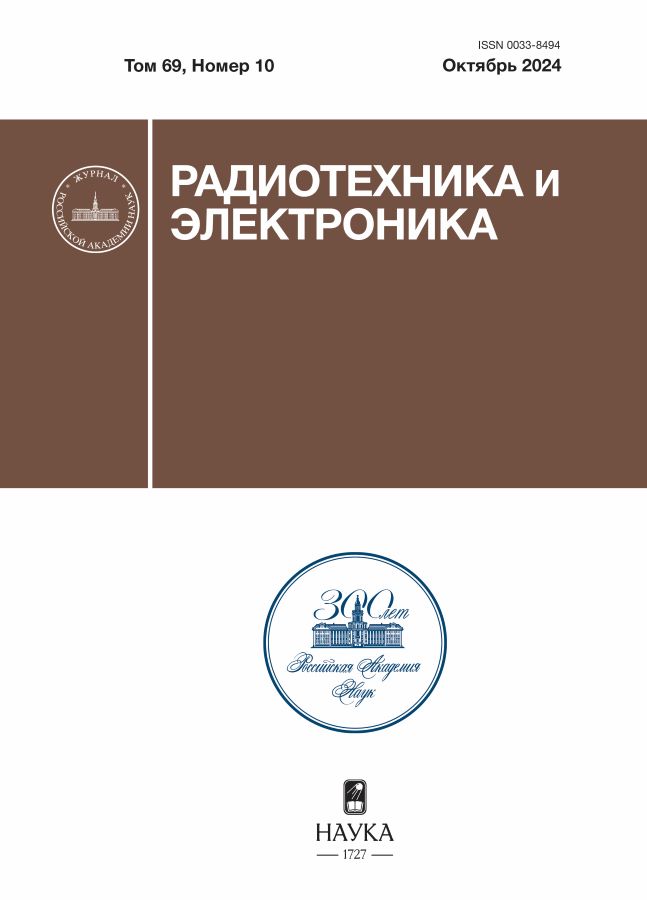Comparative analysis of magnetic and electronic properties of 2d phases of chromium tellurides
- 作者: Kartsev A.I.1,2, Safronov A.A.3
-
隶属关系:
- Computing Center of Far Eastern Branch of RAS
- Bauman Moscow State Technical University
- MIREA – Russian Technological University
- 期: 卷 69, 编号 10 (2024)
- 页面: 989-995
- 栏目: НАНОЭЛЕКТРОНИКА
- URL: https://edgccjournal.org/0033-8494/article/view/684751
- DOI: https://doi.org/10.31857/S0033849424100085
- EDN: https://elibrary.ru/HPXJGV
- ID: 684751
如何引用文章
详细
The first-principle modeling of two different quasi-two-dimensional phases based on the volume phases Cr2Te3 and CrTe3 is carried out. Structural relaxation of the obtained 2D compounds and their volumetric prototypes was performed within the framework of the density functional method and the projection plane wave method. Magnetic anisotropy in various crystallographic planes of quasi-two-dimensional structures and corresponding bulk materials has been studied. An increase in magnetic anisotropy was found during the transition from bulk phases to quasi-two-dimensional phases of Cr2Te3/CrTe3. A charge density map is constructed and the density of electronic states is found for 2D Cr2Te3 and CrTe3 materials.
全文:
作者简介
A. Kartsev
Computing Center of Far Eastern Branch of RAS; Bauman Moscow State Technical University
编辑信件的主要联系方式.
Email: karec1@gmail.com
俄罗斯联邦, Kim You Chen Str., 65, Khabarovsk, 680000; 2-nd Baumanskaya Str., 5, build.1, Moscow, 105005
A. Safronov
MIREA – Russian Technological University
Email: karec1@gmail.com
俄罗斯联邦, prosp. Vernadskogo, 78, Moscow, 119454
参考
- Zhang P., Xue S., Wang J. // Materials & Design. 2020. V. 192. P. 108726. https://doi.org/10.1016/j.matdes.2020.108726
- Zhang Z., Wang Z., Shi T. et al. // InfoMat. 2020. V. 2. №. 2. P. 261. https://doi.org/10.1002/inf2.12077
- Frazier A.B., Warrington R.O., Friedrich C. et al. // IEEE Trans. 1995. V. ID-42. № 5. P. 423. https://doi.org/10.1109/41.464603
- Charles Jr H. K. // Johns Hopkins APL Technical Digest. 2005. V. 26. №. 4. P. 402.
- Rohrer H.R. // Jap. J. Appl. Phys. 1993. V. 32. № 3. P. 1335.
- Keyes R.W. // IBM J. Research and Development. 1988. V. 32. № 1. P. 84.
- Гуляев Ю.В., Сандомирский В.Б., Суханов А.А., Ткач Ю.Я. // Успехи физ. наук. 1984. Т. 144. № 3. С. 475.
- Gong C., Zhang X. // Science. 2019. V. 363. № 6428. P. 4450. https://www.science.org/doi/10.1126/science.aav4450
- Kartsev A., Malkovsky S., Chibisov A. // Nanomaterials. 2021. V. 11. № 11. P. 2967. https://doi.org/10.3390/nano11112967Б
- Билык В.Р., Брехов К.А., Агранат М.Б., Мишина Е.Д. // Russ. Technol. J. 2023. Т. 11. № 3. С. 38. https://doi.org/10.32362/2500-316X-2023-11-3-38-4
- Negedu S. D., Kartsev A.I., Palit M. et al. // J. Phys. Chem. C. 2022. V. 126. № 30. P. 12545. https://doi.org/10.1021/acs.jpcc.2c02102
- Xiong Z., Hu C., Luo X. // Nano Lett. 2021. V. 21. № 24. P. 10486.
- Li R., Nie J.-H., Xianet J.-J. et al. // ACS Nano. 2022. V. 16. № 3. P. 4348.
- Yao J., Wang H., Yuan B. et al. // Adv. Mater. 2022. V. 34. № 23. P. 2200236.
- Medvedev M.G., Bushmarinov I.S., Sun J. et al. // Science. 2017. V. 355. № 6320. P. 49. https://www.science.org/doi/10.1126/science.aah5975
- Hafner J. // J. Computational Chem. 2008. V. 29. № 13. P. 2044. https://doi.org/10.1002/jcc.21057
- Perdew J.P., Ernzerhof M., Burke K. // J. Chem. Phys. 1996. V. 105. № 22. P. 9982.
- Kartsev A. A., Augustin M., Evans R.F.L. et al. // npj Computational Mater. 2020. V. 6. № 1. P. 150. https://www.nature.com/articles/s41524-020-00416-1
- Momma K, Izumi F. // J. Appl. Crystallography. 2008. V. 41. № 3. P. 653. https://doi.org/10.1107/S0021889808012016
- Synnatschke K., Badlyan N., Wrzesińska A. et al. // Ultrasonics Sonochemistry. 2023. V. 98. P. 106528.
- Pramanik T., Anupam R., Rik D. et al. // J. Magn. Magn. Mater. 2017. V. 437. P. 72.
- Bian M., Kamenskii N., Han M. et al. // Mater. Research Lett. 2021. V. 9. № 5. P. 205.
- Debbichi M., Debbichi L., Lebègue S. // Phys. Lett. A. 2020. V. 384. № 27. P. 126684.
补充文件














